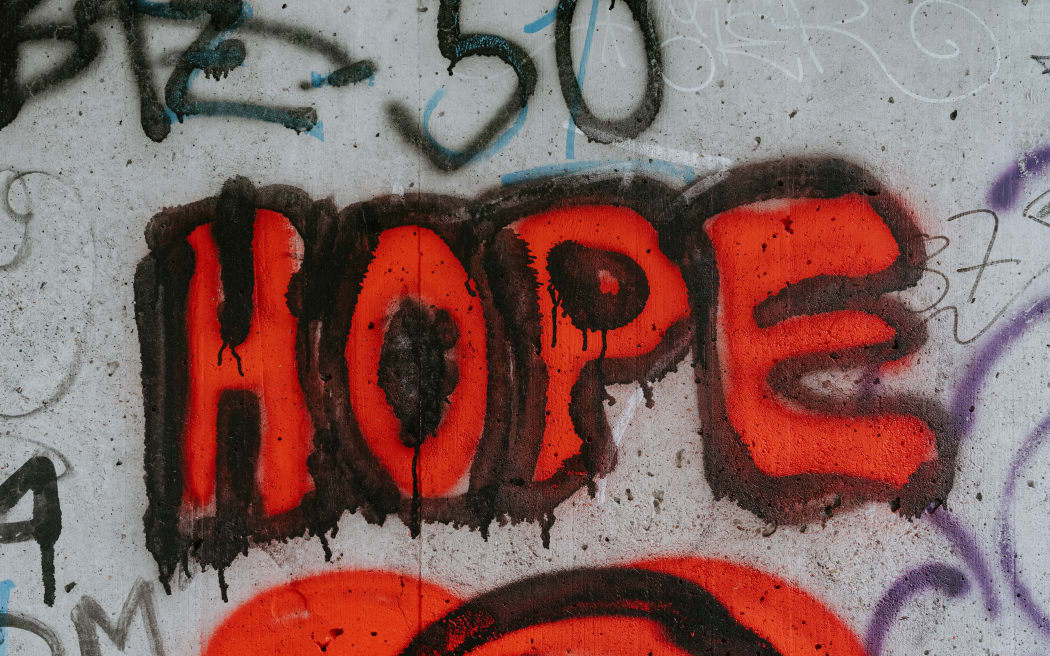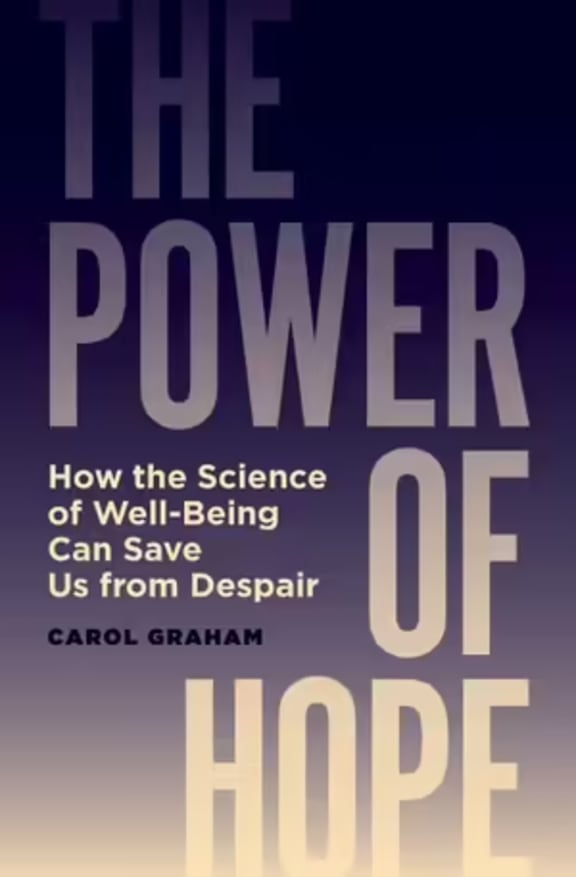Hope matters; it can help us make better, healthier choices for a happy and more productive life, an American academic says.
Dr Carol Graham studies hope, not as a psychologist, but as an economist at the Brookings Institution think tank.
Her studies around the world show that hope thrives in some very unexpected places and that it can improve lives in measurable ways.

Photo: Unsplash/Claudio Schwarz
Her new book is called The Power of Hope: How Wellbeing Science Can Save Us from Despair.
Hope is distinct from optimism, she tells Jesse Mulligan.
“In my book, I discuss the difference between the tragic optimist who thinks everything is going to be all right, but doesn't really do anything about it, can't really do anything about it, and may well be very disappointed, versus the hopeful pessimist, who's somebody that knows to make things better, you have to make change, you have to take action.”
Hope, she says, has “agentic qualities” in a way that happiness does not.
“Hope is really, I would say, defined by people doing something to make their future better, not just believing it will get better.”
Her research suggests hope’s links to future outcome are more important than happiness, she says.
And yet profound economic upheaval, has seen a crisis of hope in the US, she says, particularly among white working-class Americans.
“We had over 100,000 people die of just overdose deaths alone in 2021. That doesn't count suicides. It doesn't count other forms of despair related death. Alcohol disease, drug poisoning - those are just opioid overdoses.”
Minorities in the US are better equipped to deal with the effects of deindustrialisation, she says.
“Minorities traditionally did not have privileged access to those [blue collar] jobs and are much more used to, and better skilled at, multitasking, adjusting, taking on new role roles, taking different roles, and also have more extended communities of support, informal support, informal safety nets, and have fared much better during that period of change, and have more hope and resilience to manage it, than do low income whites, and I find that in my data over and over again.”
Much of the glue that held white working-class communities together has gone, she says, further eroding hope.
“It turns out that minorities are much more likely to want to pursue higher education than poor whites. And that is in part because of tradition. If you were white and had a good public high school education in the US, you usually got work in manufacturing jobs, mines, whatever, but they were respected jobs and you had a stable life, that kind of respected, stable, lower middle-class life - those jobs are gone.
“And there were no built-in informal coping mechanisms. The other things that held it all together; things like unions, things like stable families, they're also really declining, or have declined dramatically, and particularly among the white working class.”
Around the world policymakers are looking at this and some progress is being made, she says.
The What Works Wellbeing Centre in the UK, a partly government funded project, is a good example, she says.
“They have scholars design interventions to increase hope, to reduce loneliness, whatever it might be, and they implement the interventions.
“And then they have other academics evaluate the outcomes.”
This can be a source of policy ideas, she says.
“Interventions need to be context specific, but at the same time, if you're thinking about policy, you want some nuts and bolts policy levers.”
Also, in the UK, the Be Well programme is aimed at teenagers, she says.

The Power of Hope book cover Photo: supplied
“They teach things like self-esteem, resilience, coping skills in middle schools, they start to instil the sorts of traits that help socio-emotional and cognitive skill development, as people go into the labour force.
“Those are skills that are increasingly valuable for success in today's labour markets where, I don't want to say low skilled work will disappear, but it's a much smaller part of the labour force than it used to be.”
In the US, Santa Monica is making considerable strides in wellbeing, she says, which was the first city in the US to implement a city-wide wellbeing initiative.
It conducts an annual survey of well-being, similar to New Zealand, and has well-being priorities in its policymaking budget decisions, she says,
“It's also doing a lot of community level interventions, things like programmes to increase participation in the arts.
“Even though Santa Monica seems like an idyllic beach community, it's actually very divided income wise, racially, between rich and poor, between certain neighbourhoods.”
The idea is that these initiatives help pull the community together, and help excluded people feel included, she says.
“It's funny how belonging shows up so much in so many ways in workplace satisfaction, in wellbeing metrics.
“It's the opposite of loneliness which is linked to, not causally linked, but definitely patterns link loneliness to depression, and other bad mental health outcomes.
“And so, it's showing that you can do things at both kind of macro and micro levels.”

